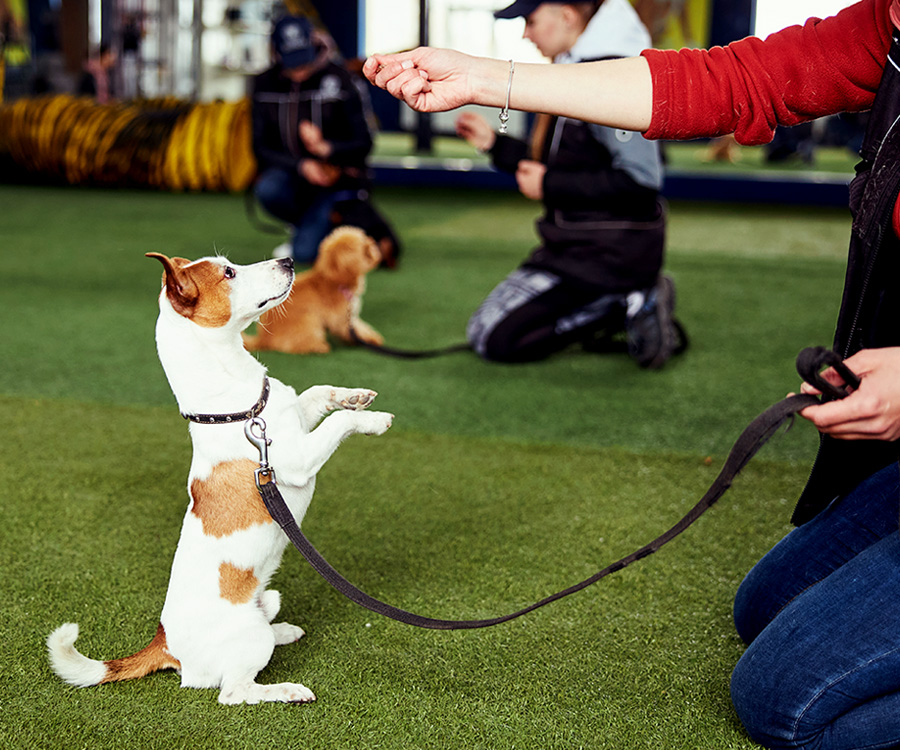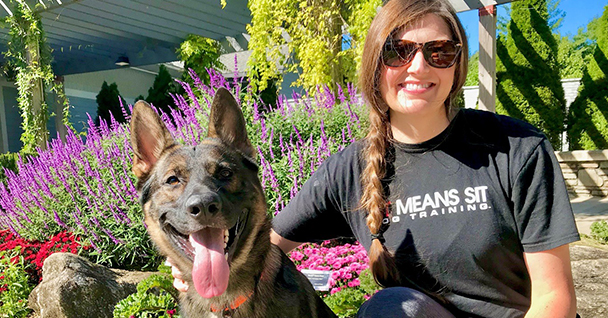Understanding Canine Body Movement Throughout Dog Training
Wiki Article
Important Tips for Successful Dog Training: A Guide for Pet Dog Owners
Efficient pet dog training is a diverse procedure that needs a calculated method tailored to both the family pet's personality and the proprietor's purposes. Recognizing how to navigate these obstacles can dramatically enhance the training experience, eventually transforming the partnership between owner and canine.Recognizing Canine Habits
Understanding dog habits is necessary for effective training and promoting an unified partnership in between dogs and their owners. Pet dogs connect largely via body movement, vocalizations, and actions, making it crucial for proprietors to analyze these signals properly. Acknowledging a dog's stance, tail setting, and ear alignment can provide understandings right into its emotion. For circumstances, a wagging tail does not constantly indicate happiness; it can likewise signal exhilaration or anxiety.Socializing plays a significant function in pet habits; direct exposure to different atmospheres, individuals, and other pets can dramatically impact a canine's temperament. Aspects such as breed attributes and private character should lead training approaches, as some breeds may have specific behavioral characteristics that necessitate tailored approaches. By comprehending these elements, proprietors can produce a supportive atmosphere that urges favorable habits, causing effective training outcomes and a much deeper bond with their pets.
Developing Regular Commands
Efficient communication with your pet dog starts with developing constant commands. This fundamental element of training is vital for promoting understanding in between you and your animal. Consistency in the commands you make use of ensures that your dog can accurately connect specific words or expressions with the preferred habits.When picking commands, select clear, distinct words that are easy to separate and state from one another. Avoid making use of similar-sounding commands that may perplex your canine. For example, using "sit" and "stay" is proper, but "sit" and "hit" could bring about misunderstandings.
Furthermore, keep the same tone and volume for each command. Dogs are delicate to singing signs, so varying your tone can create complication.
It is equally crucial to guarantee that all member of the family are on the very same page relating to the commands made use of. A united front in command use will avoid mixed signals and reinforce the knowing procedure.
Favorable Reinforcement Methods
The power of favorable reinforcement in pet training hinges on its capacity to motivate preferred habits via benefits and appreciation. This method is grounded in the concept that actions complied with by desirable outcomes are most likely to be duplicated. By integrating favorable support right into your training regimen, you can successfully form your pet's behavior in a useful manner.To carry out positive support, it's necessary to identify what inspires your dog, whether it be treats, playthings, or verbal praise. When your canine executes a desired action, such as resting on command, quickly award them with a reward or affection. This organization between the command and the favorable end result enhances their understanding.
It's important to timing the benefits properly; supplying the reinforcement within secs of the desired actions aids your dog make the link (dog training). Additionally, uniformity is crucial-- ensure that all relative utilize the exact same commands and benefit systems to avoid confusion

Slowly, you can reduce the frequency of treats as your pet finds out the habits, transitioning to commend or intermittent rewards. This approach not just cultivates a solid bond between you and your pet dog yet also advertises a positive understanding environment, making educating a delightful experience for both.
Socialization and Interaction
Consistently revealing your pet to a range of atmospheres, individuals, and various other animals is critical for their social development. Socializing ought to begin early, preferably throughout the important window of 3 to 14 weeks, when puppies are most receptive to new experiences. However, older dogs can also take advantage of recurring socializing efforts.Introduce your canine to different settings, such as parks, pet-friendly shops, and city anonymous areas. This direct exposure helps them adjust to various stimuli, reducing stress and anxiety and fear actions. Encourage favorable interactions with various other pet dogs and individuals, making sure that these experiences are controlled and risk-free to cultivate confidence.
Make use of structured playdates with courteous pets, as this can enhance your pet dog's social abilities and instruct them suitable actions. Obedience courses and training sessions additionally supply excellent opportunities for socialization, enabling your canine to interact with others in a monitored environment.
Screen your pet dog's body language during communications, as this will certainly help you determine their comfort level. Gradually increase direct exposure to more challenging scenarios while making sure that each experience is favorable. A well-socialized canine is much more likely to exhibit balanced actions, making them a joy to have in any setting.
Resolving Common Training Obstacles
Every dog proprietor will experience training difficulties eventually, despite their canine's age or socializing degree. Determining common concerns such as stubbornness, interruptions, and terror can assist in creating effective strategies for renovation.
Gradually present diversions as the canine becomes a lot more proficient in commands. Short, frequent training sessions are likewise efficient in preserving focus.
Terror can hinder a canine's understanding procedure. Progressive desensitization to the source of worry, coupled with positive support, can aid ease stress and anxiety. Perseverance is important; never ever require a canine into a situation that triggers distress, as this may aggravate the issue.
Eventually, understanding and resolving these common challenges with an organized approach will cultivate an extra productive training experience, reinforcing the bond in between canine and owner while advertising efficient important site knowing.
Final Thought
In recap, successful dog training relies upon a detailed understanding of canine actions, the establishment of constant commands, and the application of favorable reinforcement techniques. Socialization plays a critical function in developing well-adjusted family pets, while pop over to these guys dealing with typical training difficulties calls for patience and flexibility. By applying these crucial approaches, animal owners can promote a strong bond with their pets and promote preferable behaviors, inevitably causing a harmonious partnership in between humans and their canine friends.Comprehending pet actions is essential for reliable training and promoting an unified connection between pooches and their owners.Socialization plays a substantial function in dog habits; exposure to different environments, individuals, and other animals can significantly impact a pet dog's temperament.The power of favorable reinforcement in canine training exists in its ability to encourage desired habits with rewards and appreciation. By incorporating positive reinforcement right into your training program, you can properly form your dog's behavior in a constructive way.
In recap, effective canine training relies on a comprehensive understanding of canine actions, the establishment of regular commands, and the application of positive reinforcement methods.
Report this wiki page